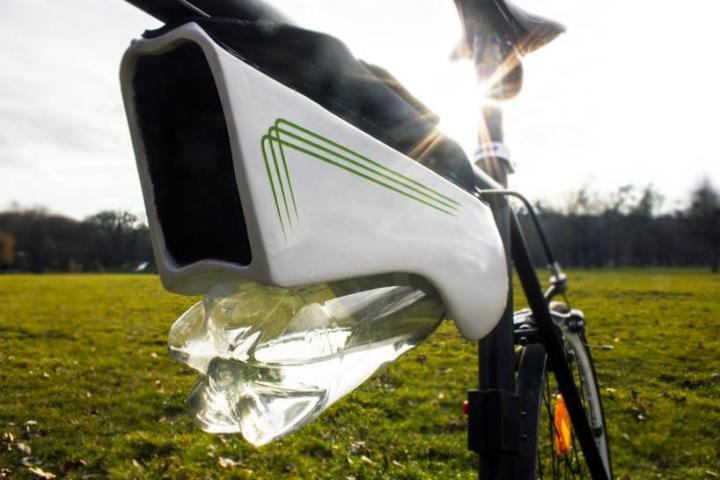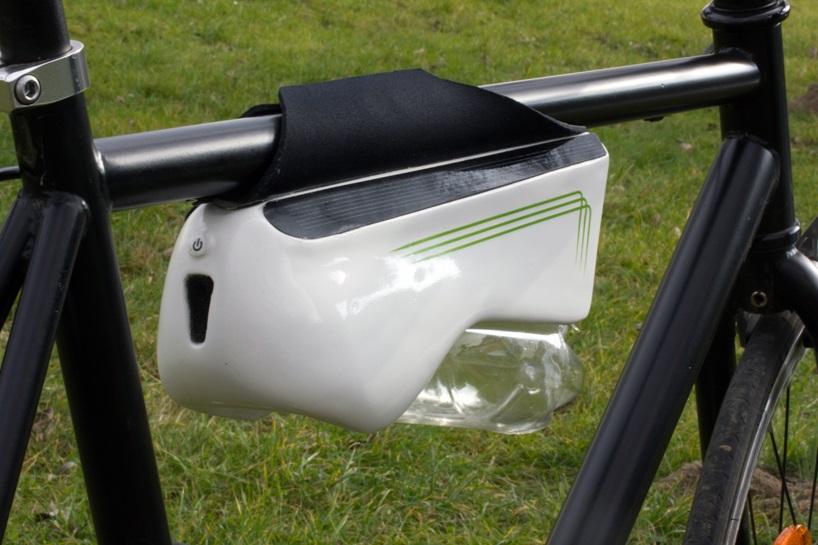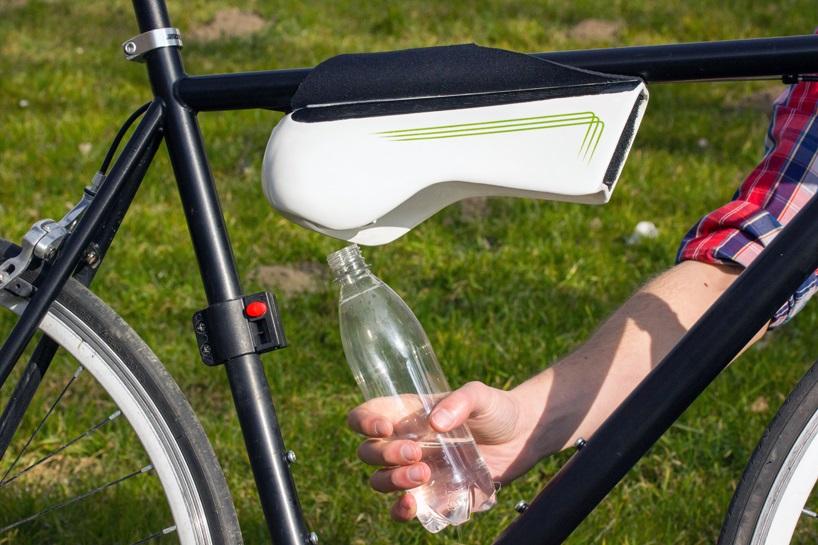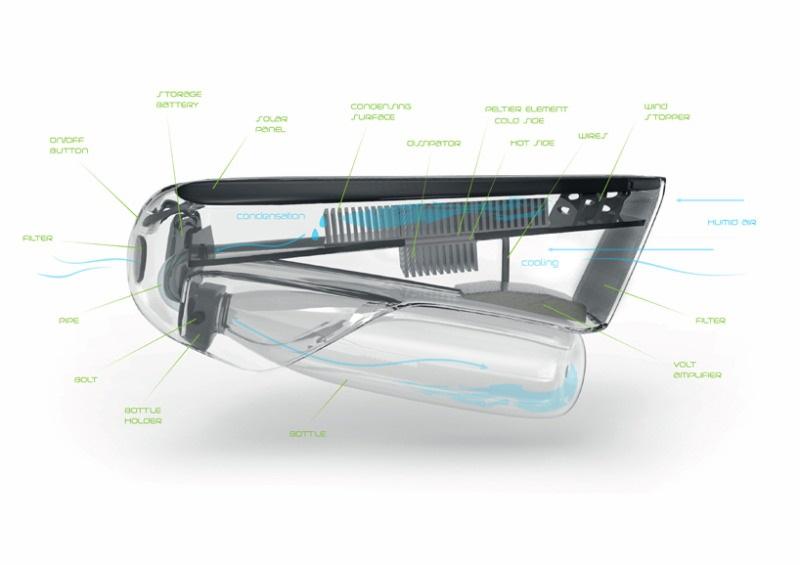
Created by design student and budding genius Kristof Retezàr, the device uses solar panels to generate electricity used to cool the opening at the top where the air blows in as you ride. The air then passes through a two-chambered cooler called a Peltier element, which causes any moisture contained inside of it to condense and drip into the bottle The moisture condenses and drips into the bottle. It’s that simple. It might not be ice cold, but it’s better than nothing.
Since it the device is designed to work with any kind of half-liter bottle, the possibilities for creating potable water in areas that don’t have easy access to it are huge. That said, there are two minor downsides to the design at the moment. First and foremost, it’s not well-suited for city riders. The moisture collected from urban air is often contaminated and therefore not fit for consumption (another reason to dread going out in New York on really humid days).
The other downside? The production of water is a little slow. Fontus can produce one drop of water per minute of use on a humid day, which is roughly half a liter per hour. To put that in perspective, the generally accepted doctor’s recommendation is to drink about between two and three liters of water a day. On a hot, humid day when you’re sweating and exerting a lot of energy, that can jump to five to six liters depending on the oppressiveness of the environment and how hard you’re pushing yourself. At this point, it’s good enough to keep you from dying if you get lost or, more likely, tide you over until you get to a larger water source.
The prototype cost less than $40, but Fontus is just an exercise at the moment. Retezàr has gone through dozens of different iterations to get the device to where it is now, so it’s a fairly safe bet the Fontus will continue to be improved. Let’s hope this young inventor gets some investors with manufacturing experience to make this a reality.





